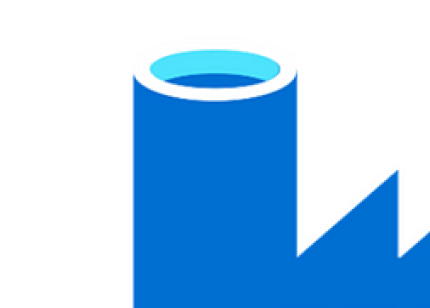Workflow smarts: Dagster vs Azure Data Factory
Azure offers a visual workflow tool for creating data pipelines as part of its ecosystem. Why should you opt for Dagster instead?




What these tools were built for


Code-first orchestration with full lineage visibility
Dagster is a data orchestration platform built specifically for engineers. It lets teams define pipelines and data assets in code, test locally, manage them in Git, and run them with smart scheduling and full lineage visibility.
Visual data pipelines, minimal code, azure-only focus
Azure Data Factory is a GUI-first data integration tool that allows users to build pipelines using a drag-and-drop interface. It’s designed primarily to move and transform data between Azure-native services with minimal coding.

How Dagster and Azure Data Factory compare
Software development lifecycle & developer experience


Built for engineers: CI/CD, testing, and code-first everything
Dagster lets teams define everything in code—from pipeline logic to resources and scheduling. Developers can iterate locally, test pipelines with mocks, and push changes through CI/CD workflows. PRs are readable and reviewable like any other software project.
Web-first, not dev-first: ADF’s pipeline management model
ADF pipelines are created in a web interface and stored as JSON. This makes version control and testing difficult. Pull requests are hard to review, and there’s no true local development.
Data awareness & lineage
From pipelines to platforms: Dagster tracks data at every layer
Dagster makes data assets first-class. You can track lineage across jobs and teams, set SLAs for freshness, and understand exactly what’s updated, when, and by what. It enables a data mesh approach with true cross-pipeline awareness.
Limited data insight: ADF doesn’t prioritize lineage or state
ADF treats datasets as secondary to the pipeline structure. Lineage and status visibility require bolted-on Azure tools, and data asset tracking is limited.
Dagster vs Azure Data Factory feature breakdown
 |  | |
|---|---|---|
Goal of the solution | Help data engineers define and manage critical data assets. | Cloud ETL service to help ingest data into Azure. |
Run Python code reliably and provide flexibility for complex programming tasks | Python function decorators create DAGs of assets.
| Azure Data Factory is a code-free platform.
|
Data assets | Asset-centric framework:
| Pipeline first - datasets second. |
Automation | In Python Code:
| Tumbling window schedules, cron schedules with limitations, some Azure-based event driven runs. |
Integration | Asset-first integrations for common data tools | Built around 80+ data ingestion services |


Can Dagster work with Azure? Absolutely.
Dagster works well with Azure-hosted environments. Many users deploy Dagster on Azure Kubernetes, use it to orchestrate SQL Server stored procedures, and update PowerBI dashboards. Teams can migrate incrementally from ADF to Dagster without disrupting existing workflows.








Break free from the click-and-drag
Looking for unlimited deployments, advanced RBAC and SAML-based SSO, all on a SOC2 certified platform? Contact the Dagster Labs sales team today to discuss your requirements.